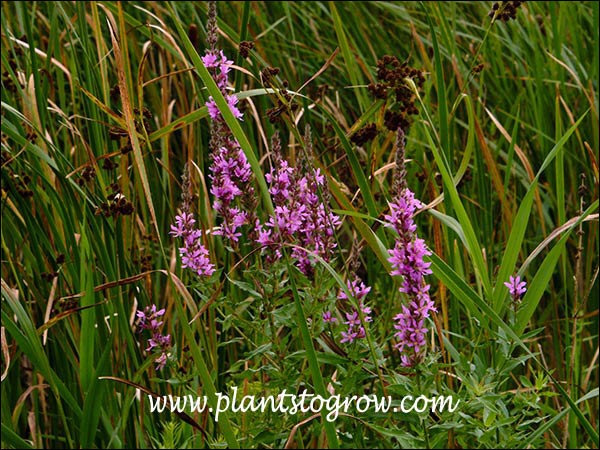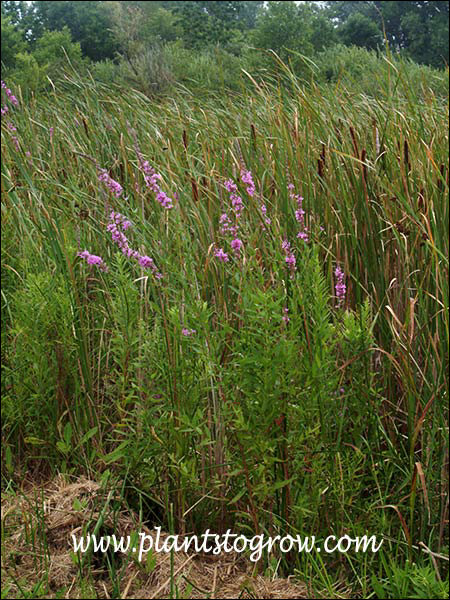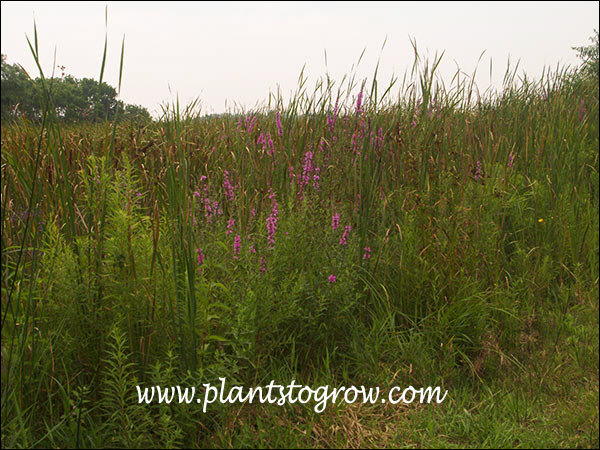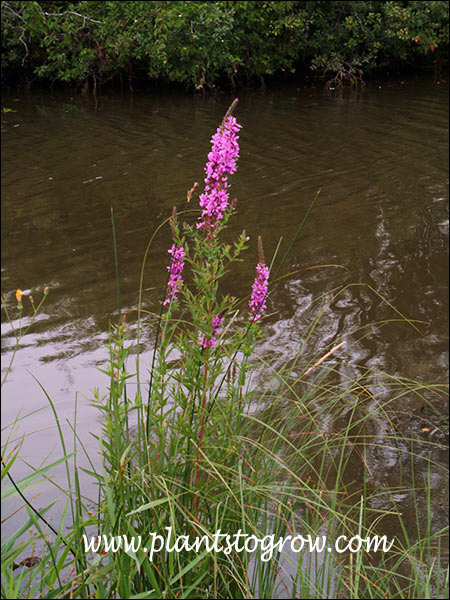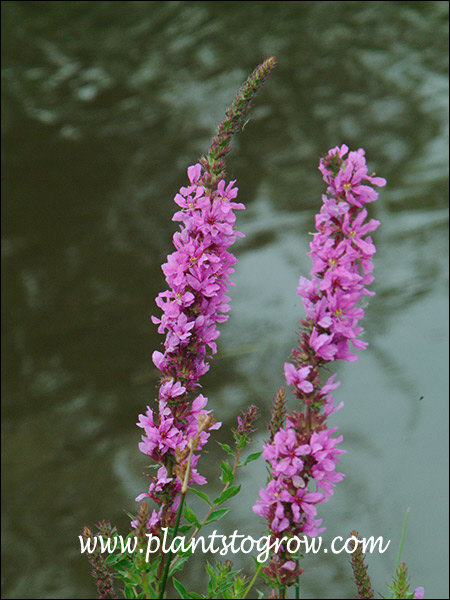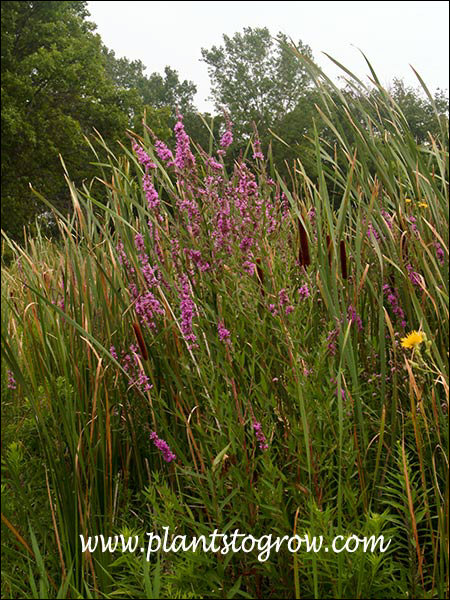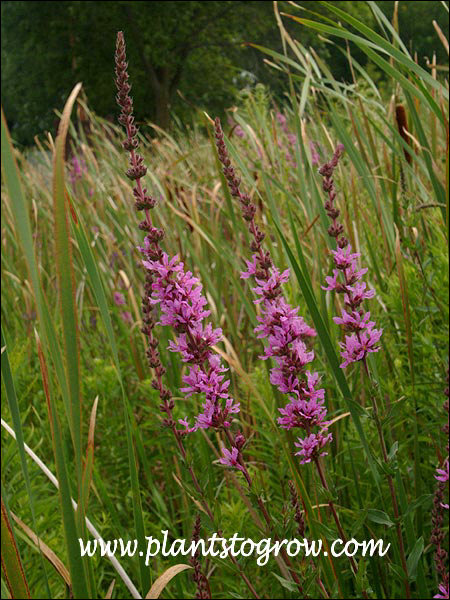| Description | At first glance a very ornamental plant. But beneath the outside beauty lays a plant that has become a major invasive pest degrading the natural wetlands. |
|---|---|
| Plant Type | All Plants, Weeds |
| Sunlight | full |
| Moisture | moist wet areas but will tolerate dryness once established |
| Soil & Site | Found growing in shallow water such as ditches, swamps, wet lands, river banks, etc. |
| Flowers | purple to magenta, on spikes, about 1/2" across and have 5-6 petals, single stalk can produce up to 100,000-300,000 seeds |
| Fruit | Seeds in the soil remain viable for many years, while seeds in the water last for about 20 months. |
| Leaves | simple, green, sessile, sometimes alternate, usually opposite, sometimes found in whorls |
| Stems | four-sided stems |
| Roots | a woody taproot with numerous fibrous shoots, forming a mat of stiff stiff stems |
| Dimensions | An upright shrub reaching 4-8 feet in height. |
| Maintenance | Lythium can be controlled by using mechanical and chemical means. There are good biological controls by using Lithium specific eating insects. Hylobius transversovittatus (a weevil), Galcerucella calamariensis and G. pusilla(leaf eating insect) have proven to help control the spread. |
| Propagation | don't |
| Native Site | Native to Europe and Asia. |
| Misc Facts | Introduced into the American gardens in the 1800's. First detected in Wisconsin in the early 1930's but didn't become common until the 1970's. Purple Loosestrife is illegal to sell and or plant in Wisconsin and many other states. |
| Notes & Reference | #101-Invasive Plants of the Upper Midwest (Betty Czarapata) |

Cart
